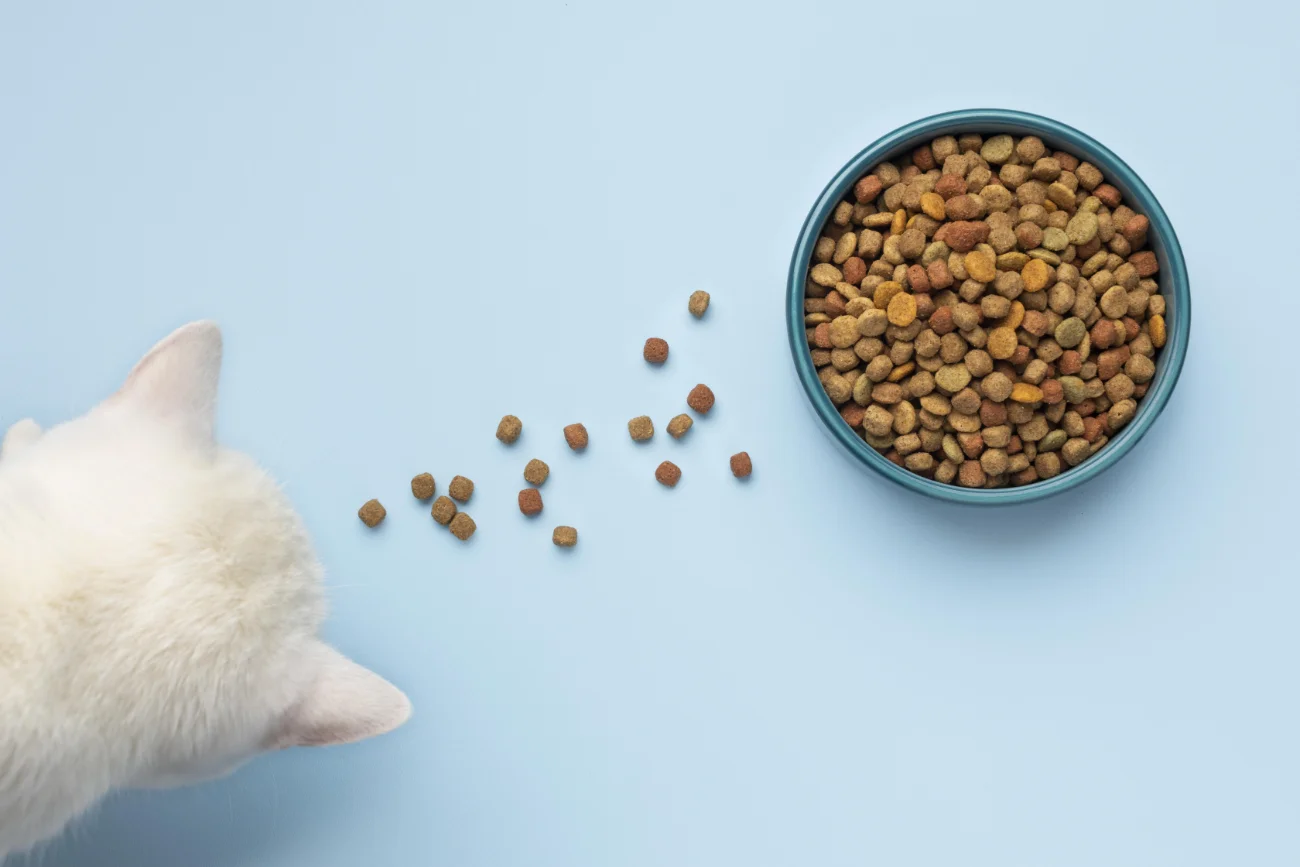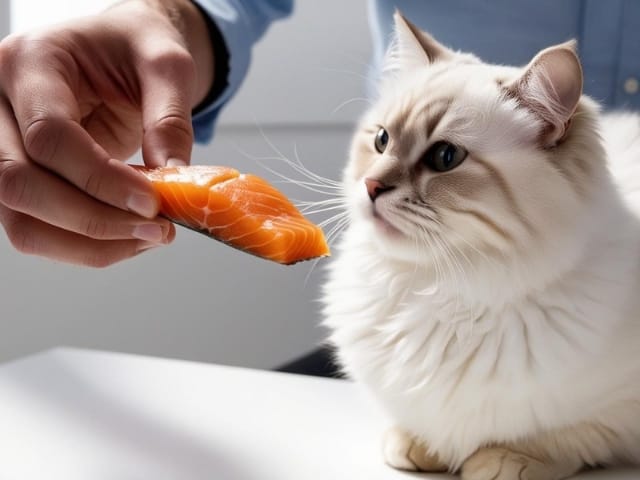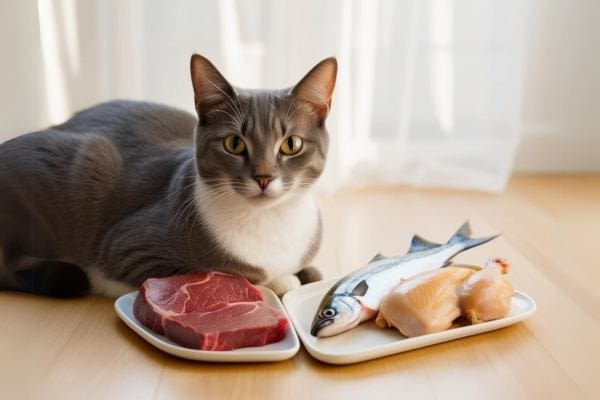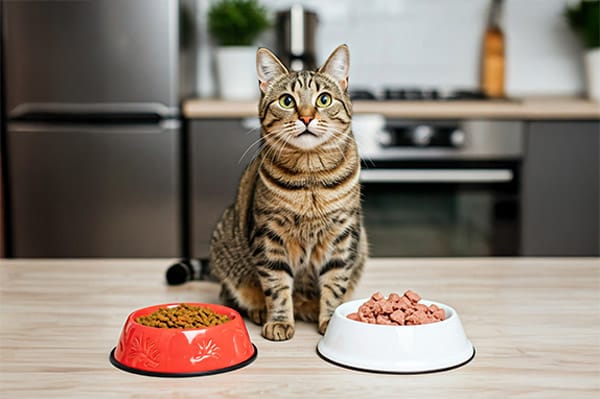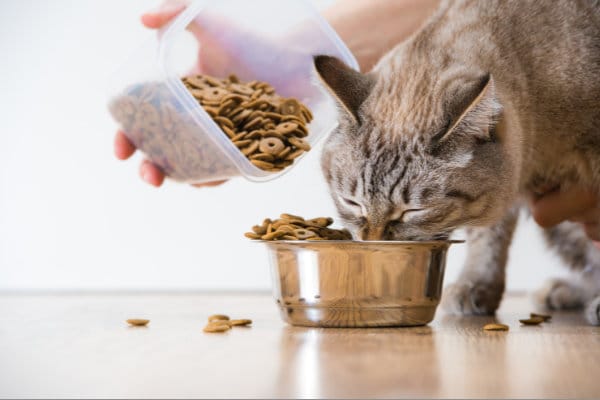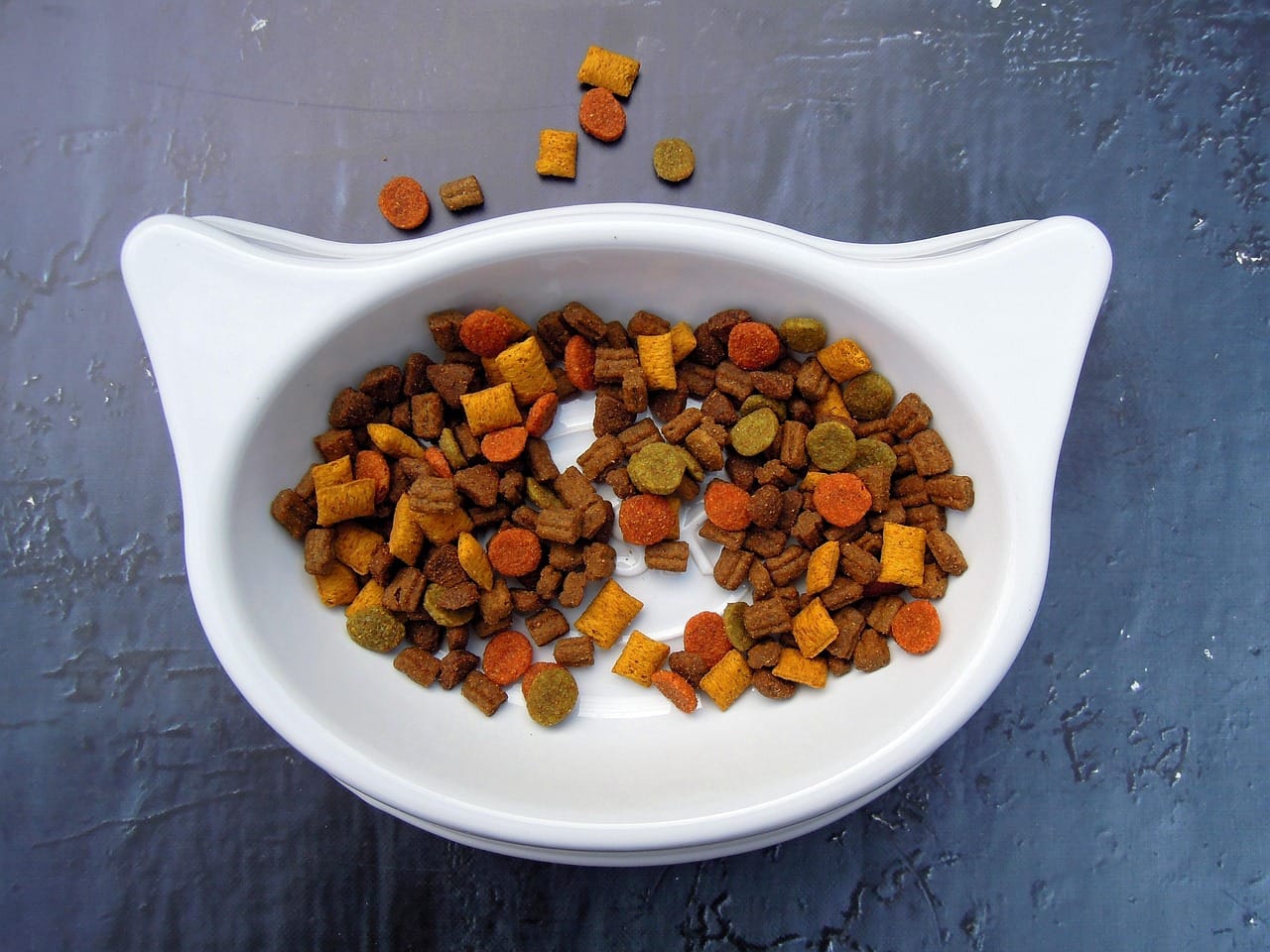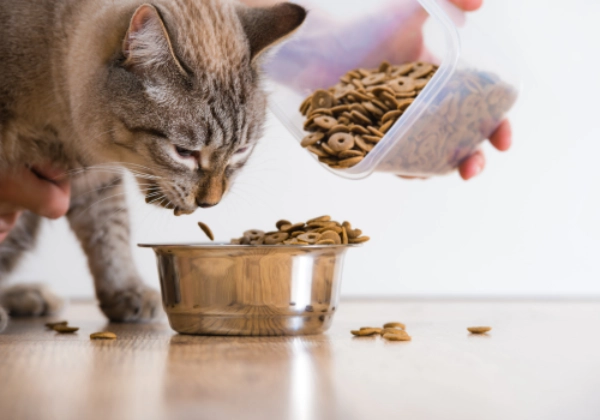
We may earn a commission when you purchase via our links at no extra cost to you.
We only share resources that meet our high standards
Introduction
As cats age, their nutritional needs shift and so does their tolerance for change. Whether you’re updating your senior cat’s food for health reasons or to meet new dietary needs, making the switch requires care and patience.
In this guide, you’ll learn how to introduce a new diet to a senior cat safely, step by step, with advice based on veterinary recommendations and real-world tips from experienced cat owners.
Understanding Senior Cat Nutrition Needs
A cat is generally considered senior at around 11 years old, according to VCA Animal Hospitals. At this stage, the metabolism slows down, muscle mass can decrease, and kidney and digestive functions may change.
That means diet plays a bigger role than ever before in maintaining energy, mobility, and quality of life.
Key Nutritional Priorities for Senior Cats
- High-quality protein: Supports lean muscle and energy.
- Moderate fat: Helps maintain body weight without stressing organs.
- Controlled phosphorus and sodium: Important for kidney and heart health.
- Added omega-3s: Reduce inflammation and support joint health.
- Increased hydration: Older cats often drink less, raising dehydration risk.
For a deeper breakdown of nutrient needs by age, check our Complete Cat Nutrition Guide.
🩺 According to the Canadian Veterinary Medical Association (2023), senior cat diets should emphasize digestibility, balanced minerals, and moisture to support renal function and overall longevity.
When to Consider Changing Your Cat’s Diet
Not every senior cat needs a new diet right away, but there are clear signs when it’s time to review what’s in the bowl.
Common Signs It’s Time for a New Food
- Noticeable weight loss or gain
- Dull coat or excessive shedding
- Less enthusiasm for food or picky behavior
- Vomiting, constipation, or diarrhea
- New health diagnosis, such as arthritis, diabetes, or kidney disease
If any of these appear, consult your veterinarian first. They can recommend a senior-specific formula or therapeutic diet suited to your cat’s age and medical needs.
How to Introduce a New Diet to a Senior Cat : Step by Step
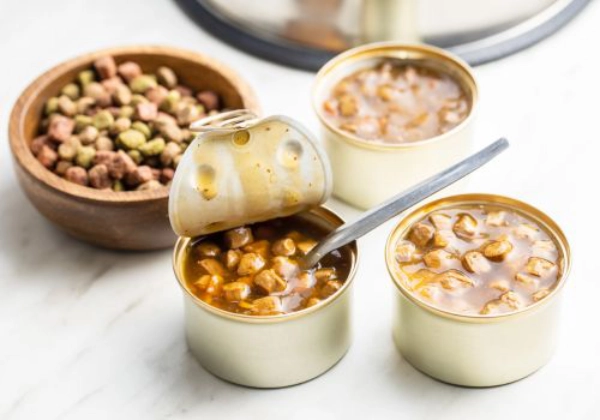
Featured Snippet Target:
To introduce a new diet to a senior cat, mix small amounts of the new food with the old one over 7–14 days. Gradually increase the new food ratio while monitoring your cat’s appetite, stool, and energy levels. Slow transitions reduce stomach upset and food refusal.
Step 1: Consult to Your Veterinarian
Before making any change, confirm your cat’s health status and nutritional goals. Older cats may have underlying conditions (like kidney disease or dental issues) that affect what type of food is appropriate.
Step 2: Choose a Senior-Specific Formula
Select a food labeled for mature or senior cats, ideally one meeting AAFCO standards for maintenance. Prioritize high moisture and digestible protein sources like chicken, salmon, or turkey.
Step 3: Prepare Both Old and New Foods
Stock enough of the old food to last through the full transition period (usually 7–14 days). Having both on hand helps you adjust ratios gradually.
Step 4: Mix Gradually
Start small.
- Days 1–3: 75% old food, 25% new food
- Days 4–6: 50% old, 50% new
- Days 7–9: 25% old, 75% new
- Day 10+: 100% new food
If your cat resists or develops mild digestive issues, extend each phase by 2–3 days.
Step 5: Observe Closely
Watch for changes in:
- Appetite and enthusiasm
- Stool texture (too loose = too fast a change)
- Coat shine and hydration
- Activity and mood
Keep a simple daily log during the transition.
Step 6: Adjust Pace if Needed
Some senior cats may need 3–4 weeks to fully switch diets. That’s normal. The goal is a stress-free transition, not speed.
Step 7: Support Hydration and Routine
Maintain consistent feeding times and always provide fresh water. If your cat eats dry food, consider adding a spoon of warm water or offering wet food alongside.
Common Mistakes to Avoid
Even well-intentioned owners make errors when changing food. Avoid these pitfalls:
| Mistake | Why it’s a problem | Fix |
| Switching too quickly | Causes digestive upset | Follow a gradual 7–14 day plan |
| Ignoring hydration | Older cats dehydrate easily | Encourage wet food or cat water fountains |
| Changing multiple variables | Confuses the cat | Change only one thing at a time |
| Ignoring small warning signs | Early intervention prevents health decline | Monitor weight, stool, coat weekly |
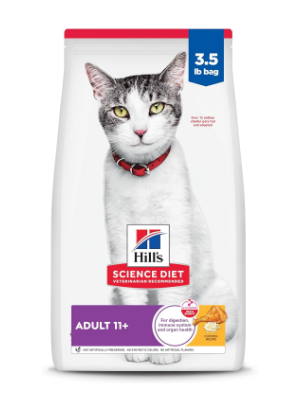
Hill’s Science Diet Adult 11+, Senior Cat Food
- Essential taurine for heart health and balanced minerals to support kidney and bladder
- Easy to digest ingredients with natural fibers for healthy digestion
- Omega-6s, omega-3s, and vitamin E for beautiful skin and coat
- #1 Veterinarian Recommended
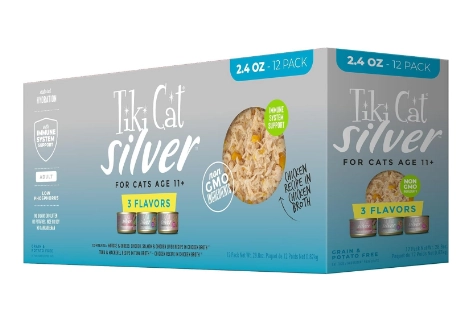
Tiki Cat Silver Variety Pack – Senior Wet Cat Food
- Variety pack of three recipes customized for cats age 11+
- Real shredded chicken and flaked salmon, tuna, and mackerel in broth
- Optimal antioxidants for immune system support
- Fiber-rich pumpkin for gentle digestion support
What to Expect During the Transition
Every cat reacts differently, but most senior cats adjust within one to two weeks. Here’s what’s normal and what’s not:
| Observation | Normal | Concerning |
| Slightly softer stool | ✅ | ❌ Persistent diarrhea |
| Occasional food hesitation | ✅ | ❌ Refusal for 2+ days |
| Mild appetite dip | ✅ | ❌ Lethargy or vomiting |
| Gradual coat improvement | ✅ | ❌ Dull coat, shedding, or itching |
Troubleshooting Guide
If Your Cat Refuses the New Food
- Warm the food slightly to enhance aroma.
- Add a teaspoon of tuna water or low-sodium chicken broth.
- Mix in a small topper your cat already loves (then reduce gradually).
If Digestive Issues Appear
- Slow the transition — repeat the previous ratio for 2–3 more days.
- Ensure water intake is high.
- Contact your vet if vomiting or diarrhea lasts more than 48 hours.
If You’re Changing Diets for Medical Reasons
Never skip vet supervision. Conditions like kidney disease or diabetes require precise formulations, and self-adjustment can be risky.
Example Transition Schedule for a Senior Cat
| Day | Old Food | New Food | Notes |
|---|---|---|---|
| 1–3 | 75% | 25% | Monitor appetite and stool |
| 4–6 | 50% | 50% | Adjust if mild gas or loose stool |
| 7–9 | 25% | 75% | Coat and energy should begin to improve |
| 10+ | 0% | 100% | Maintain new routine and hydration |
FAQs
Key Takeaways
- Always consult your vet before dietary changes.
- Switch gradually — at least 7 days, ideally 14.
- Monitor stool, appetite, and hydration daily.
- Keep routine consistent for comfort.
- Never ignore sudden weight or appetite changes.
Conclusion
Helping your senior cat adjust to a new diet takes patience and observation — but the reward is worth it. A well-managed transition keeps your feline friend healthy, comfortable, and thriving through their golden years.
Next, explore our Complete Cat Nutrition Guide to understand what nutrients support long-term vitality.

